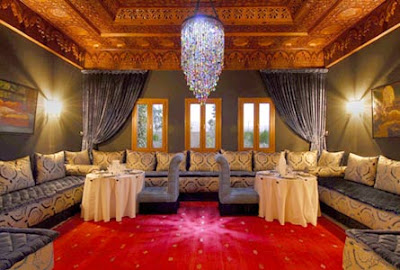Moroccans are well-known for their hospitality. This is not only reflected in the way they greet and host their guests, but it is also embodied in the meticulous attention they pay to decorating the salon or the reception room where the guests are welcomed.
Architecturally speaking, the salon remains the biggest room in the Moroccan house be it a palace, a riad, or a small apartment. Some of the Fassi houses have more than one salon and they are usually situated in the ground floor away from other rooms and facilities to keep the women of the house away from the guests’ eye, especially if these latter are foreigners.
The salon receives a particular attention in terms of decoration both in the entry and the exterior. To put it differently, almost all methods (geometric, floral or calligraphy) and all elements (zellij, wood, plaster, and marble) of decoration can be seen in a well-decorated salon. It all depends on the needs and tastes of the house owners as well as their financial means. The entry is usually a wooden carved or painted door made of cedar. Above the entry, one can find various patterns of beautiful arches on which a wooden or plaster shewaf is installed. Inside the salon, the ceiling is covered with carved or painted wood and the walls are embellished with zellij.
[1] Shewaf is both a decorative and architectural element, which remains unique to the Moroccan architecture. It constitutes of rows of carved wood and plaster muqarbas. Shewaf is used to decorate the facades that require special decorations such as the front walls of a building, the exterior parts of arches and the sides of domes.





Leave A Comment